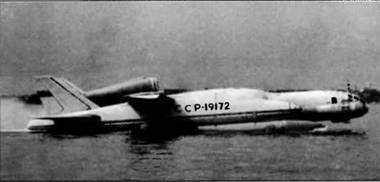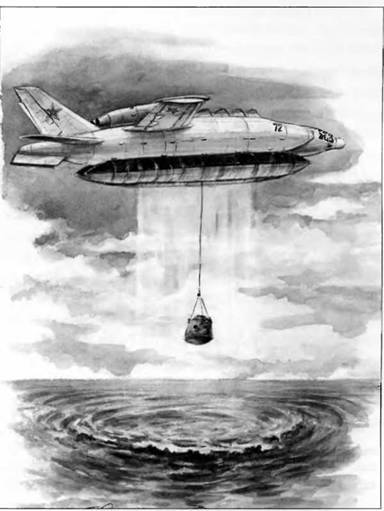He is a very angry person isn't he?
the picture of the prop fighter with wingtip mounted AMRAAMs says it all...
Armed with AMRAAM BVR and short-range Sidewinder AAMs, SC-3s could engage even supersonic fighter jets and shoot them down. With two sets of eyeballs scanning the skies with sensors looking in all directions, its very likely the SeaHawk III crew will see the MIG first and shoot first.
And which model Mig will ignore detecting this fighter at ranges in excess of 80km and will wait till it is within visual range before opening fire?
As I mentioned... being able to operate from water requires fairly calm water... it compromises the aerodynamic shape of the aircraft which introduces more drag and weight which is never a good thing, and it increases maintainence requirements... expensive modern jet engines don't like salt water and there are limits to what you can do with regard to corrosion resistance.
I personally think the airship is something worth bringing back... with modern materials like carbon fibre and strong fabrics and of course new technology like fuel cell technology allowing the use of hydrogen as a fuel and a lifting gas and also when put through a fuel cell as ballast then they become much cheaper and more flexible.
You could design an airship to operate at 30,000m or 40,000m where there is very little oxygen so hydrogen wont even burn. The main problem with airships has been the waste of hydrogen to descend and climb and the complicated use of ballast.
to start with the airship must be neutrally buoyant. Send it to a location to pick up the payload, but to load the payload on you have to drop ballast to maintain buoyancy. Once fully loaded with payload and fuel you start to fly to the destination but as you travel you burn fuel and get lighter so you need to release lifting gas or you just keep climbing.
Once you get to the destination you need to offload the payload while at the same time take on ballast... usually water or sand bags.
For a naval airship loading enormous radar antennas as part of the aircrafts structure so really all you need is lifting gas to get airborne and fuel to run the diesel engines plus some ballast and perhaps some self defence missiles.
You can use a fuel cell to process hydrogen gas into water to create electricity and heat... electricity to power the motors to move around or keep station, and heat can be used to increase the efficiency of the hydrogen as a lifting gas. Diesel fuel can also be used to maintain station and power the radar antenna in active mode. Solar panels can be used to convert water into hydrogen gas through the fuel cell or stored electricity in batteries can be used.
To climb you can use electricity to create more hydrogen from water ballast or you can burn diesel fuel. to descend or stop climbing hydrogen can be put through the fuel cell to create electricity and heat so reducing ballast and increasing lifting gas. The Diesel engines also produce heat which improves the performance of hydrogen lifting gas.
Alternatively a small nuclear fuel cell like the ones used on satellites could be used together with a fuel cell to enable a large radar to be operated with the flexibility the hydrogen fuel cell offers in terms of ballast/lifting gas management.
Regarding the second article about bringing back heavy sea planes... what does he mean by back?
(Sorry to post Wiki at you but it is handy..)
http://en.wikipedia.org/wiki/Beriev_Be-12
http://en.wikipedia.org/wiki/Beriev_A-40
http://en.wikipedia.org/wiki/Beriev_Be-103
http://en.wikipedia.org/wiki/Beriev_Be-200





